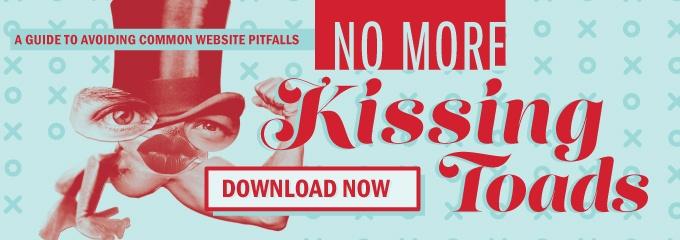 Marketing
Marketing
3 Things Bill Nye the Science Guy Taught Me About Websites
I hated science.
I can still remember hitting the snooze button in Mr. Mantle’s science class in middle school. But I did look forward to the rare occasion that he would bust out the LaserDisc and play the latest Bill Nye the Science Guy episode for the class.
Whether it was his experiments, witty humor, musical parodies or his cool bow tie, he had a way of capturing my young imagination. One Bill Nye episode has remains particularly memorable still today.
http://youtu.be/zTXW9aRO23Y
In his infinite wisdom, good ol’ Bill states that energy cannot be created or destroyed, it can only be stored or transferred. Further, there are two types of energy: potential and kinetic energy. Most websites out there are storing an enormous amount of energy, too. They’ve got the potential to generate sales, but often drop the ball.
What else did Bill Nye teach me about websites?
Branding matters
Whether is was a catchy tune or his stylish bowtie, Bill Nye knew the power of branding. I believe the biggest thing holding most sites back from being the engaging lead generating tools is branding.
First impressions matter on the web, just as they do anywhere else. And, the first impression your site makes should be one of professionalism and appropriateness for the markets you serve. Your website isn’t just about your company, it’s an extension of your company. If it’s unprofessional, so are you. If it’s cluttered, you’re cluttered. If it’s hard to work with, you’re hard to work with.
Conversely, if it’s well put together, smart, and easy to use, so is your company. At least that’s what people will perceive. And most small business websites don’t do their companies justice.
Obey the Cocktail Party Rule
Another huge element holding most websites back is their failure to yield to the ‘Cocktail Party Rule.’
If we meet at a party, and I only talk about how awesome I am, you’re going to scurry away as soon as you can. I get it, you’re proud of the business you’ve built. (As you should be.) It is tempting to write a lengthy description of your business accomplishments and display it on your homepage with a big photo of yourself, your building and/or your employees, saying, “We’re here to serve you.”
But prospects and customers aren’t coming to your site to learn about all the great things you’ve accomplished.
They’re coming to your site to find out what you sell and how it will help them. You have to earn their attention with benefits-oriented headline and text. The headline should make clear what you do and suggest a benefit. This is just like a catapult — when you build up energy on your site with what you can do to help your customers, it can launch you to distant places.
Only after you interest the customer in your products or services, will they want to know more about your company before deciding to do business with you.
KISS Method
I’m not talking about the band (although we have a blog post for that too) — KISS is an acronym for “Keep it simple and straightforward.”
The KISS principle states that most systems work best if they are kept simple rather than made complicated; therefore simplicity should be the key. Bill Nye was always great at this. In fact I would argue it’s what made him so successful — his ability to take complex scientific principles and make them palatable.
When a potential customer clicks through to your website from a search engine, they should arrive on a page that gives them what they are looking for. Send people to the relevant page. Or, if they find you via your homepage, take them to the answer they are looking for and the product in as few clicks as possible.
Once there, offer suggestions as if you were face to face. I find it helpful to think of selling your product or service on your site as you would in a store — if you were a customer in a shop looking at a dress an assistant might say, “These shoes would go well with that.”
Provide that communication with your consumer online, by offering alternatives or complementary products.
Bonus Tip
Bill Nye always had these great experiments to test his scientific principles.
One of inbound marketing’s core tenets is to “test everything that moves,” because, with the incredible pace of change on the Internet, you just never know what strategy or angle is going to work best. This applies even to our top-performing strategies, because there’s always room for improvement.
The bottom line is, testing is the only way to discover what works on your website, and it’s the best way to start increasing your sales exponentially. And if you take the plunge and use just one of the following tests, you’ll learn just how true this is, especially when you start seeing a dramatic improvement to your bottom line.
Bill Nye made me excited for Mr. Mantle’s science class because he made it fun! He disarmed me and got me to trust him. Building trust online is just like any other kind of marketing: it’s a marathon, not a sprint. You build your social capital one interaction at a time. If your brand is personal, your content is genuine and you provide a clear answer every time you meet somebody on the web, you’ll go a long way toward earning their trust.
And before you know it, you’ll make strangers into friends and friends into customers.
Photo courtesy Ed Schipul
How does your website harness energy to win customers? Let us know in the comments!


